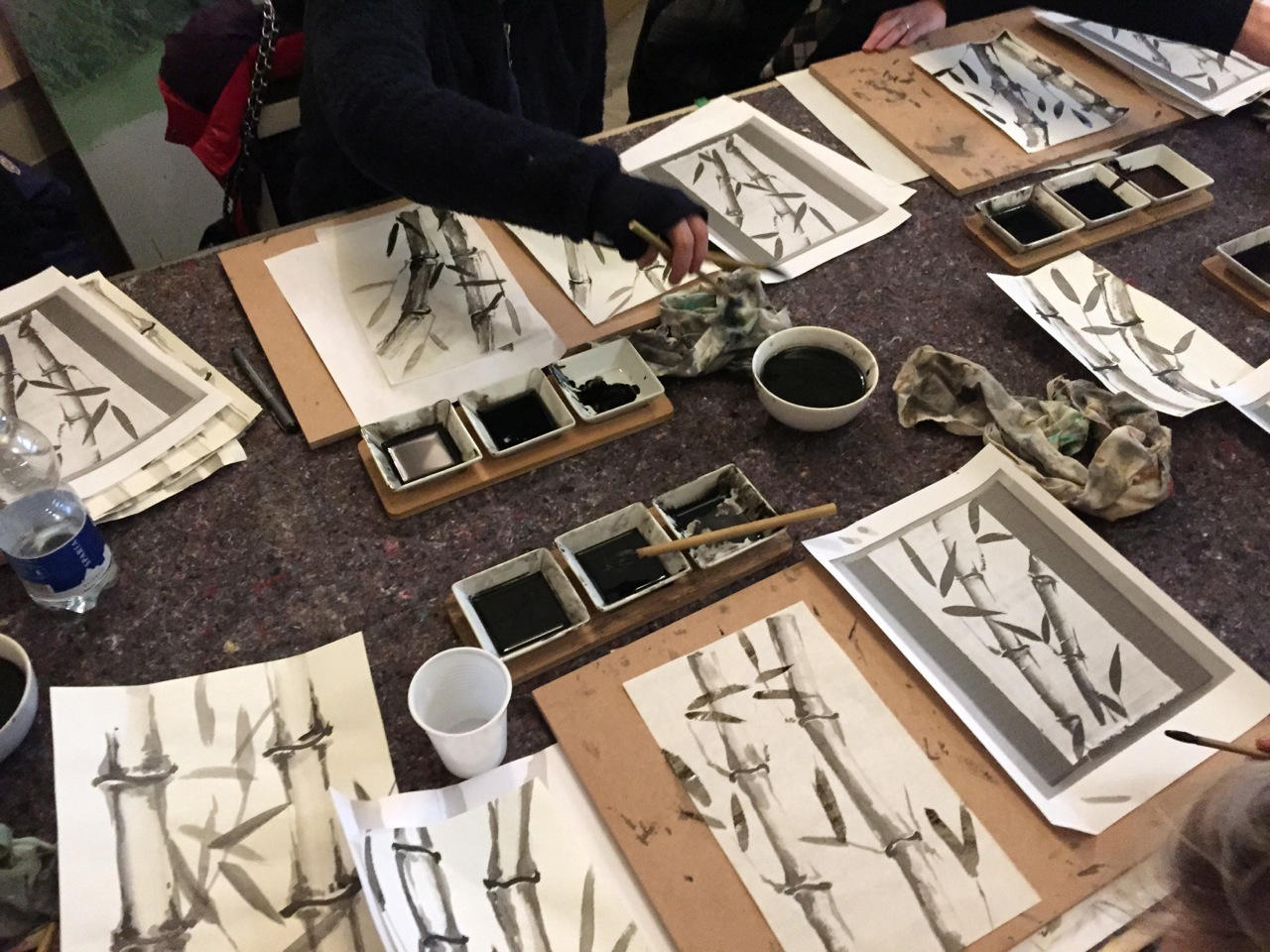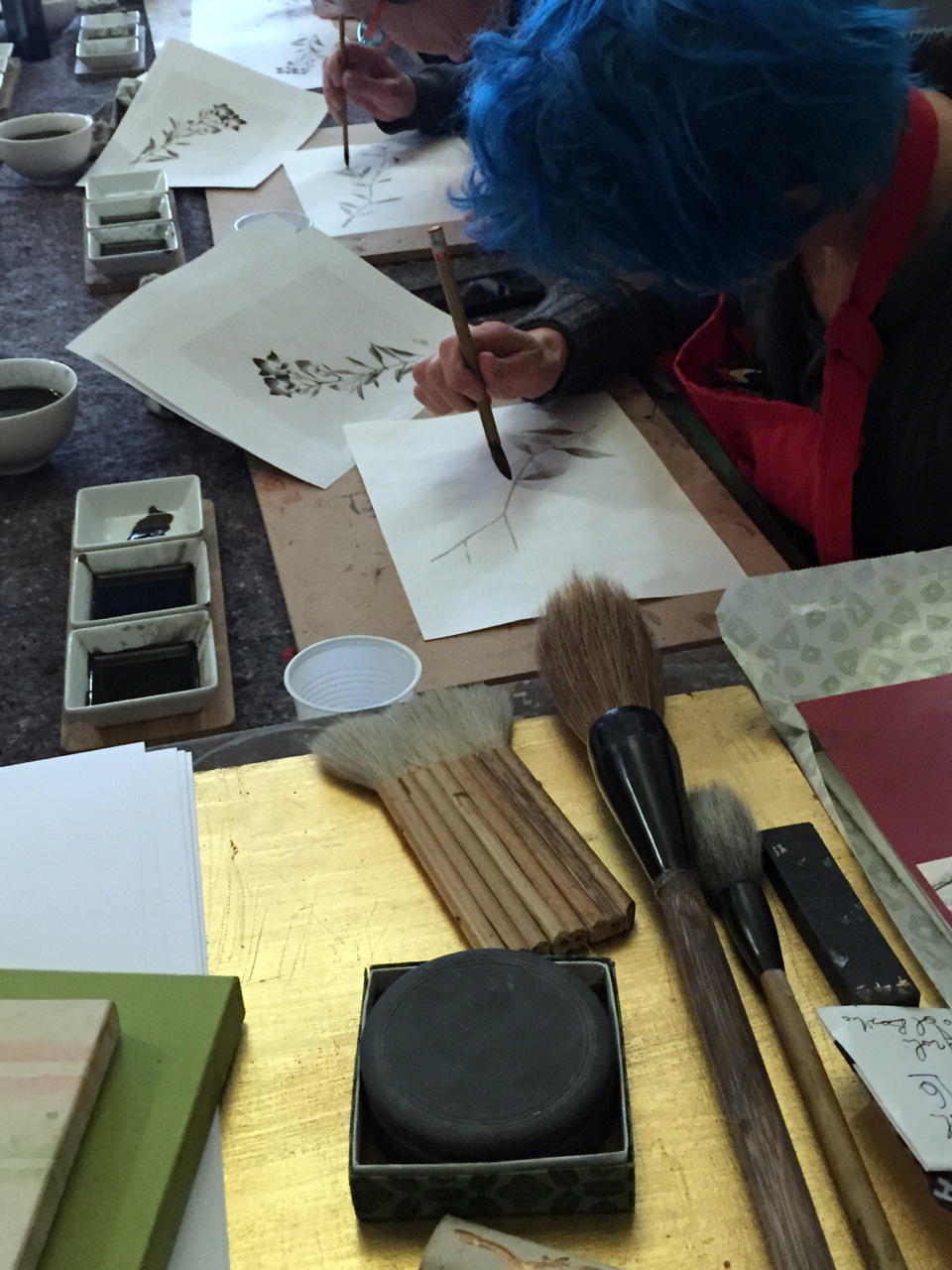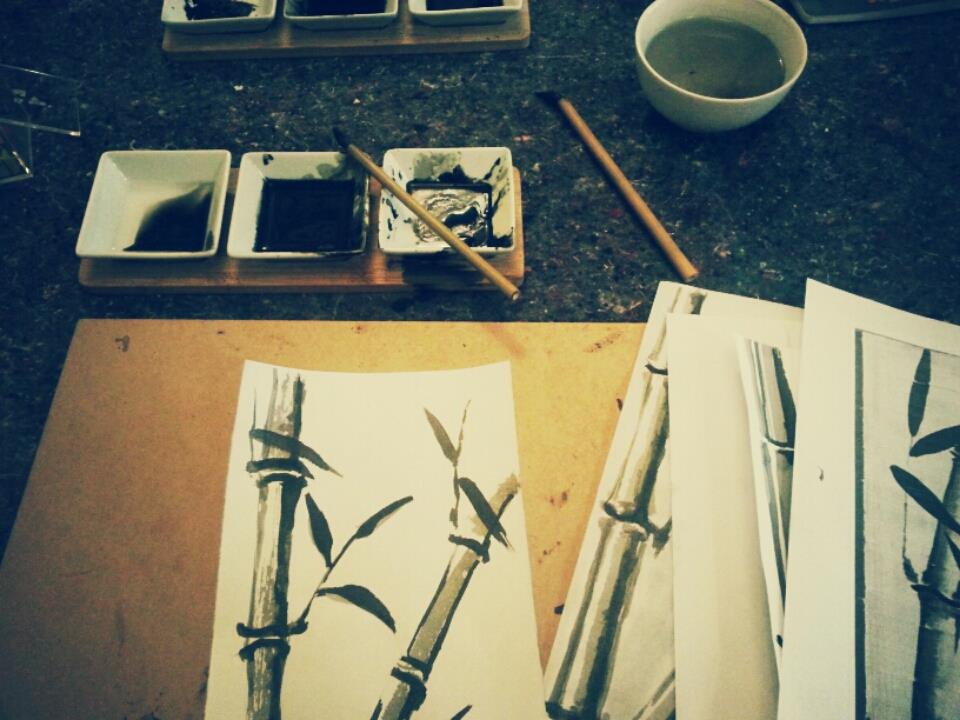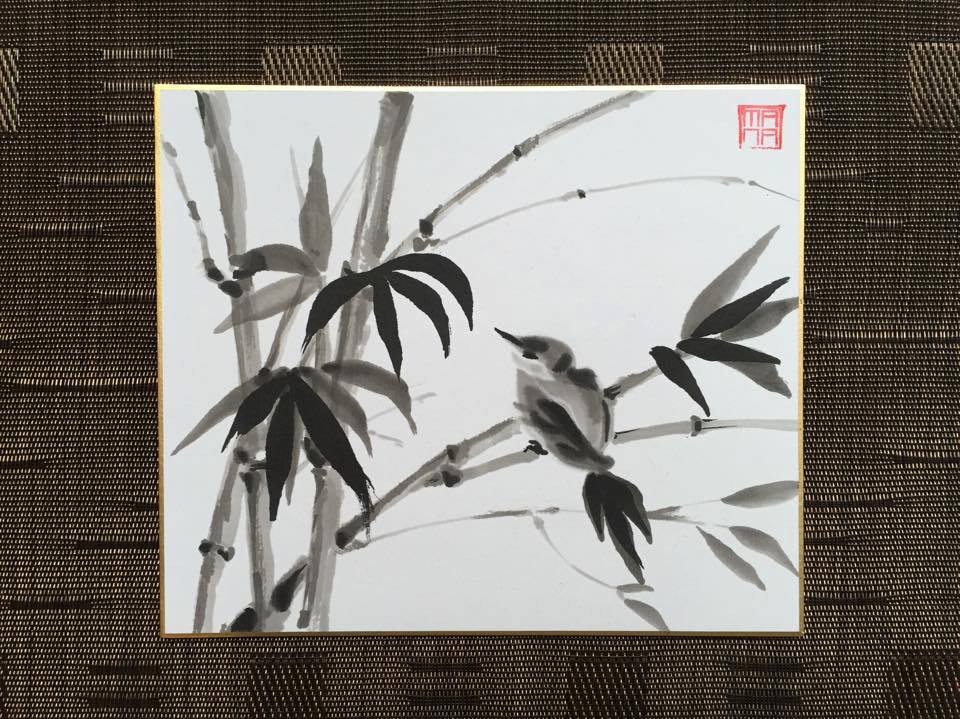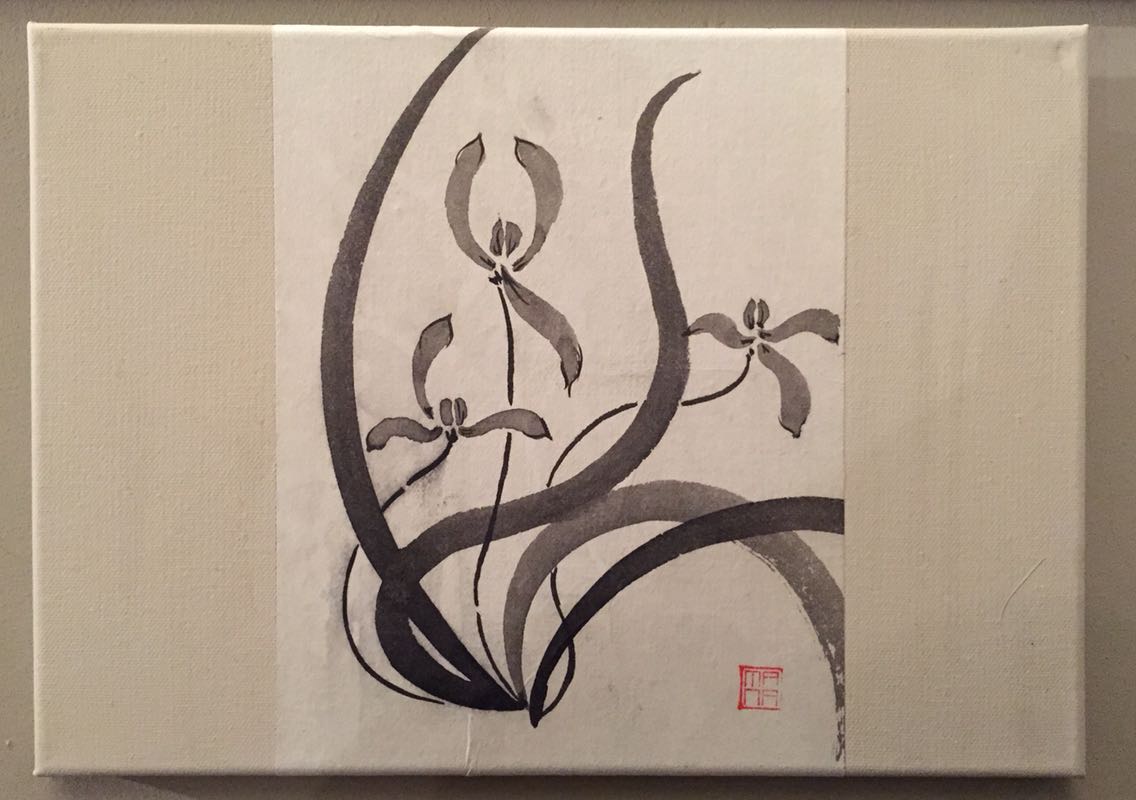Pittura Zen, Sumi-e
Filippo Manassero, artista, ci descrive in questa breve ed efficace introduzione, la sottile magia della pittura sumi-e.
.
Con i termini giapponesi sumi-e si indica uno stile pittorico monocromatico dell'Estremo Oriente che utilizza solo inchiostro nero, il sumi, in varie concentrazioni. Questa tecnica nacque in Cina durante la dinastia Tang. Fu introdotta in Giappone a metà del XIV secolo da alcuni Monaci Buddisti ZEN, crescendo in popolarità fino al suo periodo di massimo splendore, nell'era Muromachi.
Quando ho deciso di avvicinarmi alla pittura sumi-e l’ho fatto sulla spinta di un’attrazione puramente estetica, ignorando tutti quegli aspetti che ho poi incontrato e che mi hanno costretto a mettermi in discussione e a confrontarmi come artista e persona.
Ero attratto da quel segno caratteristico della pittura tradizionale giapponese che in una amalgama perfetta fa convivere istintività e controllo, caos e sospensione, dinamicità ed immobilismo.
Il primo scoglio da superare furono i pennelli: abituato alle setole e alle forme di uso classico occidentale, ho dovuto attraversare un iniziale smarrimento nel constatare che il mio livello di manualità e sicurezza sembrava fermarsi sulle punta delle dita senza riuscire a scorrere attraverso il pennello per trasferirsi sulla carta.
Di seguito, man mano che riuscivo a riappropriarmi della mia abituale dimestichezza, comprendendo meglio le particolari esigenze e comunicando loro con i movimenti giusti, ho iniziato ad intuire che il percorso che avevo intrapreso portava con se non solo aspetti squisitamente tecnici e materici su cui lavorare ma anche di tipo trascendentale. Interconnessioni con dimensioni spirituali e di introspezione.
Chiariamoci, non che la pittura occidentale non offra questa possibilità, ma nel sumi-e certamente, questa è ancora più a portata di mano, se nella propria vita si è disponibili ed attratti da quelle dimensioni che hanno a che fare con il proprio equilibrio e comunicazione interiore, la propria spiritualità, la ricerca di un approccio nei confronti di se stessi e con la vita. Non a caso il sumi-e è forse maggiormente conosciuto in occidente con il nome di pittura Zen. Nei miei corsi che oggi tengo, non mi permetto di sviscerare ed esercitare questi temi e rimango solo ed esclusivamente sugli aspetti tecnici, in quanto non sono una guida spirituale ma un pittore professionista, nonostante ciò non posso esimermi dal far notare e stimolare il gruppo sul cogliere questi aspetti, in quanto molte sono le analogie con la sfera del mondo Zen, a partire dalla postura, la gestualità obbligata di alcune tecniche che rimandano a strumenti meditativi, la concentrazione, lo stato di rilassamento che spontaneamente si mettono in moto nel momento in cui si iniziano a fare i primi passi in questa tecnica.
The Japanese word “sumi-e” refers to a monochromatic pictorial style of the Far East which uses only black ink, in diverse dilutions.
This technique was created in China during the Tang dynasty and introduced in Japan in mid-fourteenth century by some Buddhist zen monks, growing in popularity until its maximum splendor during the Muromachi era.
When I decided to approach the sumi-e painting technique, I was pushed by a purely esthetical attraction, ignoring all those aspects that blossomed while I was painting and which have forced to put myself under discussion and to confront me as an artist and an individual.
I was attracted to that characteristic sign of Japanese traditional painting, which, in a perfect combination, allows the blending of instinct and control, chaos and suspension, dynamism and immobility.
The first challenge I had to overcome were the paintbrushes: I was used to classic, western bristles, and at first I got lost noticing that my manual skills and self-confidence seemed to stop on the finger tips without seemingly flow through the paintbrush and then move to the paper.
After I got acquainted with the brush – by understanding better the particular needs and by applying the right movements – I started understanding that the path I had initiated brought with it some issues that were not only merely technical, but also transcendental.
They were in fact, interconnections with spiritual and introspective dimensions.
Indeed, it’s not that western painting does not offer this possibility, but certainly in the sumi-e this potential is far more handy, if of course one is attracted to those dimensions dealing with balance and communication with the inner self, with spirituality and the quest for a specific approach with oneself and life in general. It is not by accident, in fact, that sumi-e is better known in the Western world by the name of Zen painting. In the classes I currently organize, I do not allow myself to go deeply into these matters, keeping lessons on a merely technical level, as I am not a spiritual guide but only a professional painter. Nevertheless, I cannot prevent myself from stimulating the group in understanding some of those aspects, as many analogies with the Zen world, starting from posture, or the gestures driven by some techniques recalling meditation instruments, concentration and state of relaxation that are automatically set in motion when starting to work in this technique.
Tecnica che per noi occidentali impone di abbandonare l’aspettativa di raggiungere risultati esteticamente belli a partire dai nostri canoni, per fare spazio a segni, forme e macchie che senza apprensione tendono all’essenza di ciò che si vuole rappresentare spogliato di orpelli e manierismi.
Noto oramai da tempo che le persone che si affacciano al sumi-e, a differenza di chi sceglie percorsi più classici, si stressa meno relativamente al risultato che produce in termini di qualità e resta in qualche modo affascinato dell’atmosfera che si viene a creare e dagli strumenti che viene a conoscere. Spesso sono più avvantaggiate le persone che non hanno alle spalle esperienze di pittura piuttosto che quelle che invece già dipingono, in quanto le prime non sono costrette a spogliarsi di nozioni e di saperi che in questa tecnica non ritroveranno. Certo alla lunga, chi ha già allenato una manualità, come ovvio questa ritornerà ad essere una risorsa ed un vantaggio, ma all’inizio può rivelarsi un ostacolo, un po’ come successe a me.
Ritengo che come molte altre cose, il sumi-e porti con se una duplice possibilità di lettura e di percezione. La prima come pura e semplice tecnica pittorica con tutte le sue caratteristiche, strumenti, modalità e regole. La seconda come esperienza simbolica e metafora da traslare nella vita di tutti giorni, guardando a quelle caratteristiche, modalità e regole come strumenti per vivere in maniera più presente, concentrata ed in comunicazione con l’essenza delle cose e del nostro sentire.
Quando ho iniziato questo percorso, ho voluto semplicemente seguire un’intuizione che arrivava da dentro, ho preso lezioni da diversi maestri giapponesi, ma non solo. Professionalmente ed artisticamente era un’esperienza nuova e stimolante, i miei allievi vedendo nel tempo apparire nello studio bozze ed opere ad inchiostro, hanno iniziato ad incuriosirsi ed i primi corsi sono nati dietro richiesta diretta delle persone che da me stavano facendo percorsi classici di pittura ad acrilico o ad olio.
Mi sono messo di fronte a questa arte senza immaginare che uso ne avrei potuto fare un giorno, ho solo pensato che sarebbe stato bello se a partire da quella tecnica fosse nata in me l’intuizione di realizzare delle opere scollegate da quei soggetti classici.
Ed infatti proprio ad un progetto di questo tipo sto oggi lavorando, e presto sarò in grado di proporlo ed aggiungerlo al mio percorso artistico personale.
Such a technique forces us, westerners, to abandon the expectation to reach aesthetically beautiful results stemming from our cultural standards, and to give room to signs, shapes and stains which, with no apprehension, tend to converge to the essence of what the artist wants to represent, without any decoration or mannerism.
I have noticed now for quite some time that people approaching sumi-e, differently from those who chose more classic pathways, feel less under pressure for the results they obtain in terms of quality and are somehow fascinated by the atmosphere created and the instruments that they learn to use. Quite often, people with no experience in painting have an advantage, as they do not need to get rid of notions and beliefs which they will not find in this technique. For sure, after some time, those who are already skilled will find themselves in a better position, but at first the knowledge can be an obstacle, and this somehow happened to me.
I think that, like many other things, sumi-e can be understood using two different levels. The first, which allows to see it as a simple painting technique with all its features, instruments, modalities and rules. The second level, which show it as a symbolic experience, a metaphor to translate into our daily life, looking at its features, modalities and rules as means to live in a more present way, more focused and more in line with the essence of our feelings.
When I started undertaking this path, I simply wanted to follow an intuition that was coming from the inside, I have taken classes from several Japanese masters, but not only. Professionally and artistically it was a new and stimulating experience; my apprentices started noticing sketches and ink paintings and so they started being curious.
The first classes started upon the request of people who were taking classic painting classes.
I started dealing with this art without thinking the usage I would be able to make one day, I just thought it would have been nice to have a sort of intuition that would allow me to realize paintings that were not connected to those classic subjects.
It is exactly on this type of project that I am working these days, and soon I will be able to add it to my personal artistic path.






